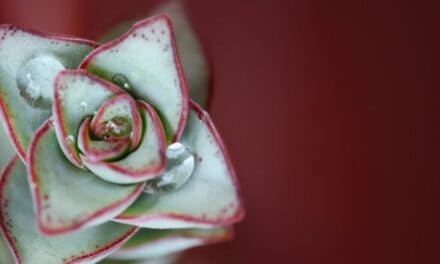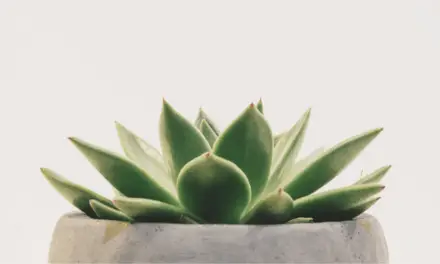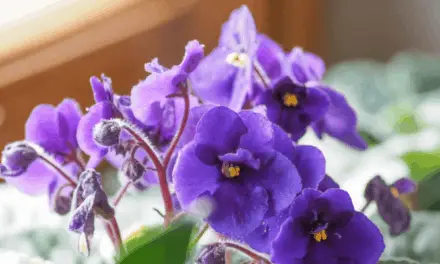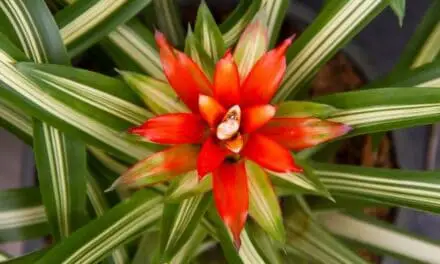Succulents are some of the easiest house plants to take care of and can be found in millions of homes throughout the world.
And apart from being one of the most hassle-free plants you can own, many succulents also produce vibrant, colorful flowers when they bloom.
Table of Contents
Do Succulents Bloom All Year?
Succulents do not bloom all year round. Some succulents can bloom beautiful flowers several times per year, however, you will usually only see flowers appear when your specific succulent is in blooming season. Each type of succulent is different from one another, so blooming seasons and lengths can vary.
In fact, many new succulent owners get a pleasant surprise when they are greeted with colorful flowers.
People often buy these easy to care for plants because of their lovely green colors and attractive foliage.
But if your succulent is well looked after you may see a stalk or bud appear and begin to bloom.
These flowers don’t last all year, but depending on the type of succulent you have and providing it gets the right care, it can bloom for weeks and several times per year.
When Do Succulents Bloom?

There are many different types of succulent plants, and some can be vastly different from each other.
Each succulent has its own blooming period.
Echeverias will likely be the easiest succulent for new gardeners to get to bloom because they usually flower in late spring or early summer but could also bloom in fall.
When a succulent has the potential to bloom several times per year, you are more likely to succeed in seeing its wonderful flowers.
Aloe vera is another summer-blooming succulent that is capable of blooming at other periods throughout the year.
Then there is the fall through winter bloomers.
These succulents still need warm temperatures to survive, but they usually don’t show any petals until it gets cold out.
Some of the succulents that people can expect to see bloom during those months are:
- Kalanchoe.
- Jade.
- Rhipsalis.
- Hoya.
While many succulents bloom seasonally, some only bloom monocarpic.
This means they only flower one time, then die off.
Before this happens, they will produce baby succulents to continue their life cycle.
Many people aren’t even aware that their succulent plants are capable of flowering.
But if you treat your succulent right then it may reward you with a beautiful flower.
Picking the dead leaves and flowers from your succulent can also help it to bloom by providing room for new life to grow.
The locations and treatment of these plants play a crucial role in whether or not they’ll bloom and for how long.
How To Get Succulents To Bloom
Succulents are the survival experts of the plant world because they can store water directly in their stems, which is why it’s not necessary to water them often.
However, one downfall is that they are usually shy to bloom.
If it doesn’t get the right love and care then you likely won’t see any bloom at all from your succulent.
Don’t Allow Too Much Full Sun
The summer season can determine how their bloom for the year goes for warm-season bloomers.
Many people keep succulents in pots indoors and the indoor climate is completely different from outdoors, and it doesn’t get some of the extreme heat that the sun provides.
Gradually introducing the plant to the sun before placing it outside for the warm season is a great way to help your succulent bloom.
However, if your succulent is a cold-weather bloomer then it’s best to place it in a cooler area indoors during those months to see it bloom.
Try to make any change in temperature a gradual one.
Fertilize Your Succulent To Help It Bloom
Make sure your succulent gets plant food as well.
They need those nutrients for the energy to bloom.
In the desert, there isn’t rain to wash those nutrients out of the soil.
Try to make sure their soil is well fertilized so they get all the nutrients they need.
Be Careful Not To Overwater Your Succulent
Succulents are pretty resilient when it comes to underwatering.
But if you overwater your succulent, it can quickly cause damage and seriously reduce the chance it blooming.
How much water your succulent needs will depend on its type and environment.
But, in general, succulents need watering every 2 to 4 weeks and you should make sure the soil has completely dried out before you water your succulents again.
Related Article: Do Succulents Need Distilled Water? (Or Is There A Better Choice?)
How To Care For A Blooming Succulent
Have you noticed a bloom beginning on your succulent?
One of the best things that can be done for the plant is to introduce it to sunlight gradually.
A blooming succulent loves sunlight, so try to give it at least an hour of good sunlight per day.
Although they love sunlight, many don’t tolerate high heat or too much full sun.
Make sure they aren’t in temperatures surpassing 90 F.
However, each plant is different from one another so it’s important to thoroughly research the particular type of succulent plant you will be caring for.
While most plants don’t do well in high heat, some summer bloomers can manage higher temperatures.
Knowing as much as possible about the plant you’re caring for is the best way to give proper care and entice it to bloom.
Succulent Blooms Can Attract Pests
When your succulent’s bloom begins to develop, watch out for aphids arriving on the scene as they are attracted to new growth.
One of the best ways to deal with them is to use 70 percent isopropyl alcohol and spray it on your succulent, just as you would treat a mealybug infestation.
How Long Do Succulent Blooms Last?
The length of time that succulent flowers last tends to vary a great deal depending on the species of your plant and the environmental conditions it is living in.
While some succulent flowers bloom and wither within a short period, others can stick around for as long as six weeks.
While succulents don’t bloom all year, you can definitely extend their lifespan by taking good care of them all year round and this will give your succulent a much better chance of blooming when the time is right.




